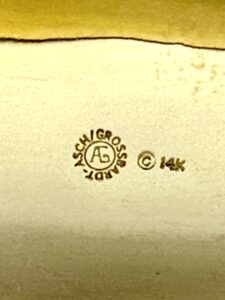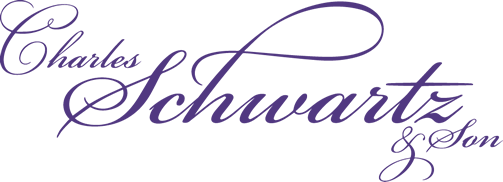Whether you’ve inherited a family heirloom or stumbled upon a unique piece at an estate sale, one big question often arises: Is this vintage jewelry valuable? At Charles Schwartz & Son, we’ve spent over a century helping clients identify and evaluate fine antique and estate jewelry. If you’re curious about a piece in your collection, here are a few key signs that it could be worth more than you think.
Look for Hallmarks and Maker’s Marks
Many valuable vintage pieces include small engravings called hallmarks that indicate the metal content, origin, or designer. These marks are often found in discreet areas (like the inside of a ring band or the back of a brooch). Look for:
- Metal purity stamps (e.g., “14K,” “18K,” “PLAT”)
- Designer stamps (e.g., “Tiffany & Co.” or “Cartier”)
- Country of origin marks (e.g., “France” or a French eagle’s head)
If you’re unsure what a stamp means, our team can help decipher it for you.
Examine Craftsmanship
Mass-produced jewelry didn’t become widespread until the mid-20th century. Older, high-value pieces tend to feature exceptional craftsmanship: hand-cut gemstones, delicate engraving, or intricate settings. These details signal quality and age, two important factors in determining value.
Assess the Materials
The type and quality of materials such as diamonds, sapphires, rubies, emeralds, or high-karat gold play a major role in a piece’s worth. Vintage pieces using natural, untreated stones are especially sought after by collectors.
Pro tip: Some older pieces may feature stones that are no longer commonly used or cut in styles no longer available today (like old mine or rose cuts), increasing their rarity.
Determine the Era
Jewelry style and technique vary greatly by era. For example:
- Art Deco (1920s–30s): Bold geometry, platinum settings, and contrasting colors.
- Victorian (1837–1901): Romantic motifs, colored gemstones, and hand-engraving.
- Retro (1940s–50s): Chunkier gold pieces, often with rubies or synthetic gems.
Knowing the era of origin not only helps determine value but also guides proper care and restoration.
Consider the Rarity and Demand
Even a simple design can be valuable if it’s rare, historically significant, or in high demand. Signed designer pieces or one-of-a-kind items—especially those from renowned jewelers—often fetch premium prices on the estate jewelry market.
Ready to Find Out What Your Jewelry Is Worth?
At Charles Schwartz & Son, we offer professional estate jewelry evaluations and can help you determine the historical, aesthetic, and market value of your piece.



